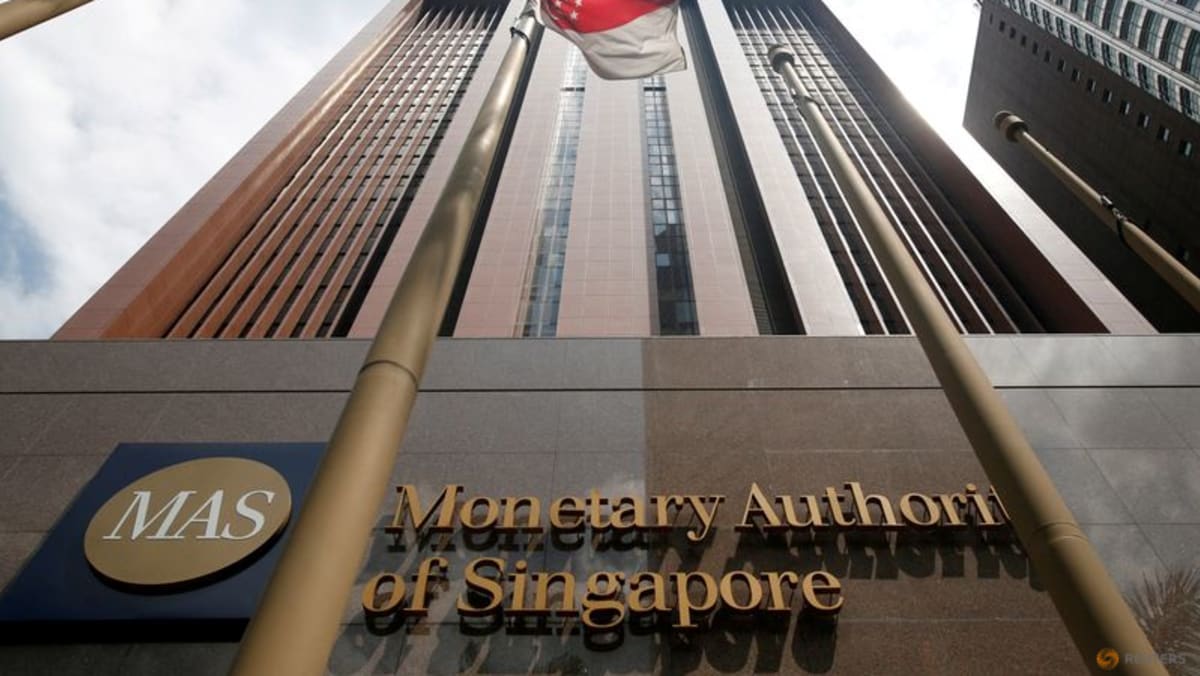SINGAPORE: The Monetary Authority of Singapore (MAS) on Monday (Apr 14) loosened monetary policy for the second time in a row as economic fears rise due to the trade war brewing between the US and China. It also lowered core inflation expectations for the year.
The central bank’s April monetary policy statement said they would “reduce slightly” the rate of appreciation of the Singapore dollar nominal effective exchange rate, though the policy of “modest and gradual appreciation” would continue.
There will be no change to the width of the band and the level at which it is centred, the central bank said.
“MAS will closely monitor global and domestic economic developments, and remain vigilant to risks to inflation and growth,” the statement said.
The move to loosen policy was in line with expectations from nine out of 10 analysts polled by Reuters. They predicted that the central bank would loosen policy by reducing the slope of the band in which the S$NEER trades.
The central bank manages monetary policy through the exchange rate instead of interest rates. It lets the Singapore dollar strengthen or weaken against currencies of the country’s main trading partners within an undisclosed band.
MAS can change the slope, mid-point or width of the band.
Before the easing of policy in January, MAS kept monetary policy unchanged for nearly five years.
INFLATION EXPECTATIONS
It also said MAS expects core inflation to average 0.5 per cent to 1.5 per cent in 2025, down from its previous expectation of 1 per cent to 2 per cent. The central bank also lowered its core inflation forecast in January.
Core inflation, which strips out the costs of accommodation and private transport, fell to 0.8 per cent in January and 0.6 per cent in February. That is a significant easing from 1.9 per cent in the last quarter of 2024, MAS said.
Soft consumer spending on food and beverage services and retail goods have dampened price increases and enhanced government subsidies have contributed to lower services inflation.
With the economic outlook weakening, the pace of price increases should be moderate, said the central bank. It added that imported inflation should be modest as global demand slows and energy commodity prices remain lower.
The forecast for headline inflation was also lowered to 0.5 per cent to 1.5 per cent, from 1.5 per cent to 2.5 per cent.
ECONOMIC OUTLOOK
MAS said prospects for global trade and GDP growth dimmed in early April following the US imposing tariffs on imports, and some countries retaliating to that. Global financial conditions have also tightened.
“Global growth is expected to weaken this year, with trade possibly moderating to a greater extent,” MAS said.
The Ministry of Trade and Industry on Monday said it downgraded this year’s GDP growth forecast to 0 per cent to 2 per cent, down from 1 per cent to 3 per cent.
Consumer and business confidence in major economies have already fallen as trade policy uncertainty increased, and Singapore’s growth momentum was weaker than expected in the first quarter of the year.
MAS said the external environment remains uncertain, adding: “A more abrupt or persistent weakening in global trade will have significant ramifications on Singapore’s trade-related sectors, and in turn, the broader economy.”
Editor’s note: This article has been updated to correct MAS’ revised forecast for core inflation for 2025. We apologise for the error.
